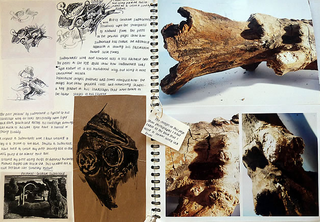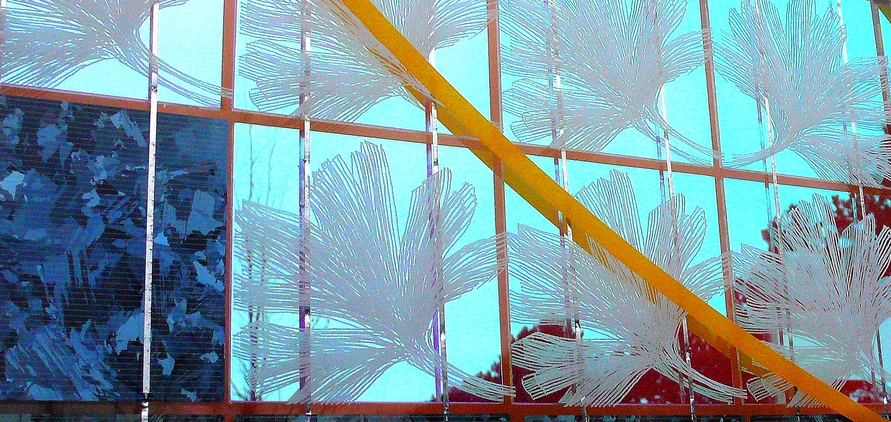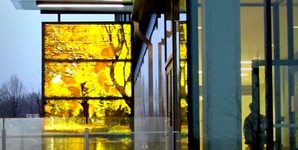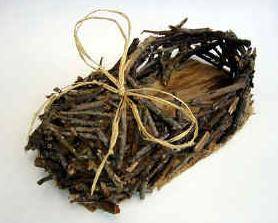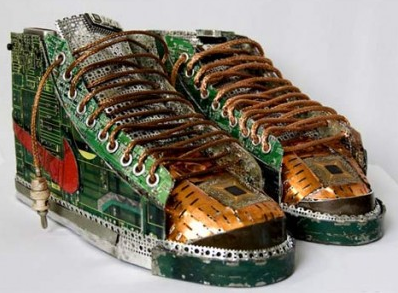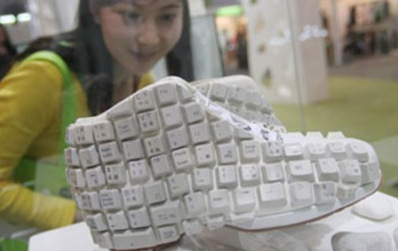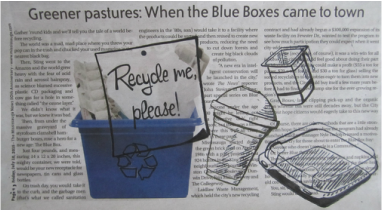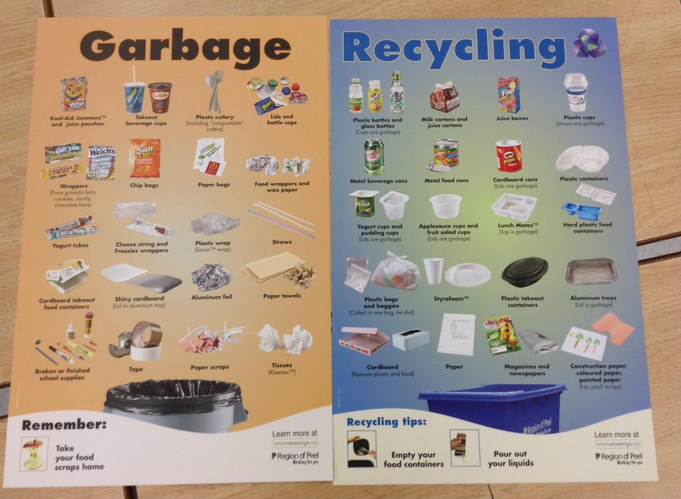Sustainable development, as well as environmental and ecological art and art practices, could be seen in the secondary Arts curriculum...
A specific focus on Grade 11 (AVI3M) Course Expectations
|
By Geneva Wilson
Copyright 2015 Student Art Guide |
A1.1 use various strategies, individually and/or collaboratively, to generate, explore, and elaborate on ideas and to develop and revise detailed plans for the creation of art works that address a variety of creative challengesAs students begin looking at and researching real-life environmental problems in their own societies, they are attaining knowledge on a topic they perhaps did not know enough about. As a result, students are reflecting, analyzing, and learning about an environmental issue from start to finish: beginning of the creative process, as they are creating their art piece, and lastly, as they are reflecting about and presenting their piece.
|
|
Leaves of Light, Sarah Hall
York University, Toronto Copyright 2012 Sarah Hall |
A2.2 apply elements and principles of design as well as art-making conventions to create art works that comment and/or communicate their personal perspective on issues related to social justice or the environmentEnvironmental art is not a novel idea; Earth artists, Land art, Eco-Art have been gaining the attention of the public for years. For instance, in 1992, Patrice Stellest created a renewable energy sculpture to “promote alternative energy sources” (University of Chicago, 2014, p. 1). Since, many other artists have begun creating art pieces using renewable energies.
Simon encourages “new forms of ‘environmental education’ could constitute particularly relevant vehicles for systems thinking and practice by building on messages and practices initiated in ecological art” (Simon, 2006, p. 144). Students can continue creating environmental and ecological art that is relevant to their generation and the issues meaningful to them. |
A3.1 explore and experiment with media, including alternative media, and current technologies, and use them to create a variety of art works
|
|
B1.2 deconstruct the visual content and the use of elements and principles of design in their own art work and the work of others |
B1.4 describe and reflect on the qualities of their own art works and the works of others, and evaluate the effectiveness of these works, using a variety of criteria
Using a variety of materials, such as those that are environmentally-friendly or those that can be recycled or upcycled, will definitively have an important role in the way an art work will be perceived and interpreted. However, Simon reports that views on environmental issues are subjective; solely the perspective of the artist is expressed as their own values and views on the issue at hand (2006). Nevertheless, reflecting on the work of others is “encouraging creativity and the expression of a multiplicity of perspectives has been helpful in dealing with the complexity of environmental problems. It has also been a way for stakeholders to learn from each other about the multiple facets of environmental problems” (Simon, 2006, p. 151).
B2.2 explain, on the basis of research, ways in which various art works are a response to and a reflection of the society in which they were created
|
The artwork on the right (Module 2 Gallery Assignment) could be considered a “reflection of the society in which the work was created in.” The newspaper article discusses the recycling changes that occurred in recent years. What at one point was solely a pilot project, developed in a program that we cannot live without today (Greener pastures: When the Blue Boxes came to town, 2015). My response to the article is not negative in meaning, but more of an added awareness that we need to make as responsible eco-citizens. On top of the newspaper clipping, I drew a Post-It note, a yogurt cup (single-serve), a take-out container (black bottom and clear lid), and an iced cappuccino/slush cup; items that I find students consistently throw in the garbage can instead of the blue box.
Simon states, “Ecological art, whether community or individual- based, often focuses on ‘experience’” (2006, p. 153). I had the experience a few months ago of receiving two recycling posters from the Region of Peel that would be posted above the garbage can and recycling bin to show students how and where to properly recycle materials in the school (Peel Region, 2015). As I began looking at all the items, I noticed a couple on the blue box poster that I myself did not even know that they go in the blue box! As of September 2013, Peel Region added more items to the list of recyclable materials, including yogurt/apple sauce/jello cups (single serve, except mini’s!), clamshell containers (e.g. strawberry/blueberry plastic containers) and take-out containers (black bottom and clear top) (Peel Region, 2014). As a result, I hope to bring awareness to others, engage them to think about recycling further, and invite them to take action to help solve one of our environmental problems. |
Recycle Me, Please! Olivia Kitala
Pen on Newspaper, 2015 New Region of Peel Posters for Peel Schools
Copyright Region of Peel |
B2.3 reflect on and explain how creating and analyzing art works has affected their personal identity and values and/or changed their perceptions of society and social issues
C3.3 demonstrate an understanding of how the production and presentation of art works can affect the environment, and apply environmentally responsible practices when creating, presenting, and promoting art works
Students should become familiar with responsible practices when creating, presenting, and promoting artwork for the well-being of the environment. Through acquiring knowledge of these responsible practices, students are continuously learning and gaining inspiration from their acts of stewardship in the classroom to creatively showcase their own initiatives and eco-art projects to the public.
Sustainable Art Practices
Brian Leichnitz from The Ontario Art Education Association has the following suggestions for making your art room more sustainable:
"Green your art room:
"Green your art room:
- conserve energy – lights and computers off when not in use, unplug your appliances when possible, keep air vents free of obstructions, minimal kiln use
- reduce consumption – use found, natural or recycled materials where possible
- reduce waste – practice the 3Rs, buy green consumables, use re-usable hand towels when possible, use found objects for art projects
- minimize toxins – ensure adequate ventilation, don’t use oil paints, oil-based inks or aerosols, ensure proper disposal of paint and waste, use natural cleaning solutions
- expose students to their natural and/or built community = get them outside (at all ages)
- model environmental practices or activism
- teach environmental concepts and values through arts themes, materials or locations
- reframe arts lessons with environmental concepts or actions in mind
- show and discuss exemplars of eco-art with your classes
- invite an eco-artist/musician/performer to do a project with your class(es)"
Derived from Sustainability and Art Education, OAE, 2013
